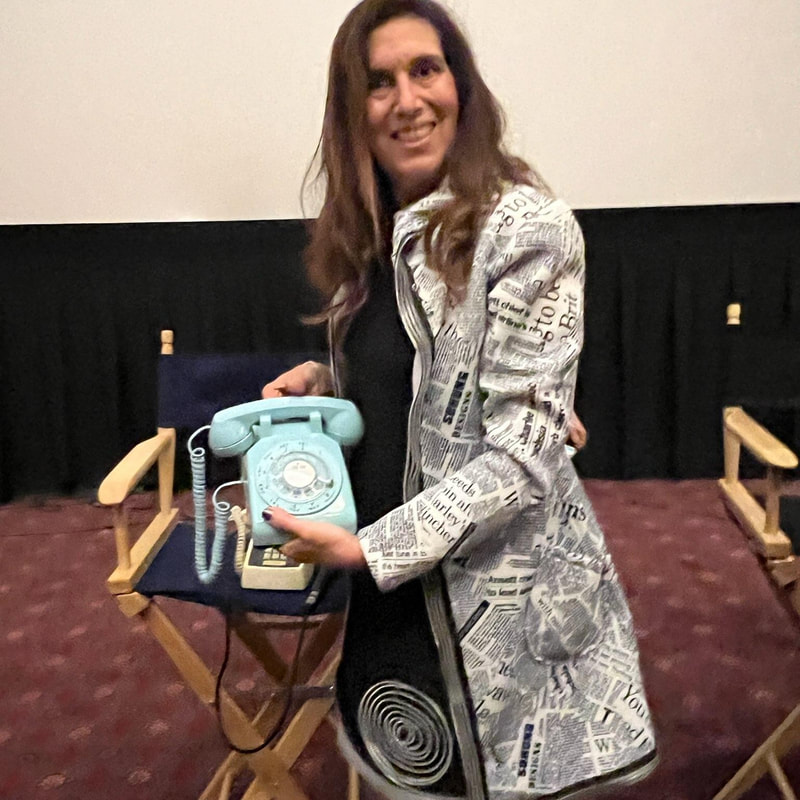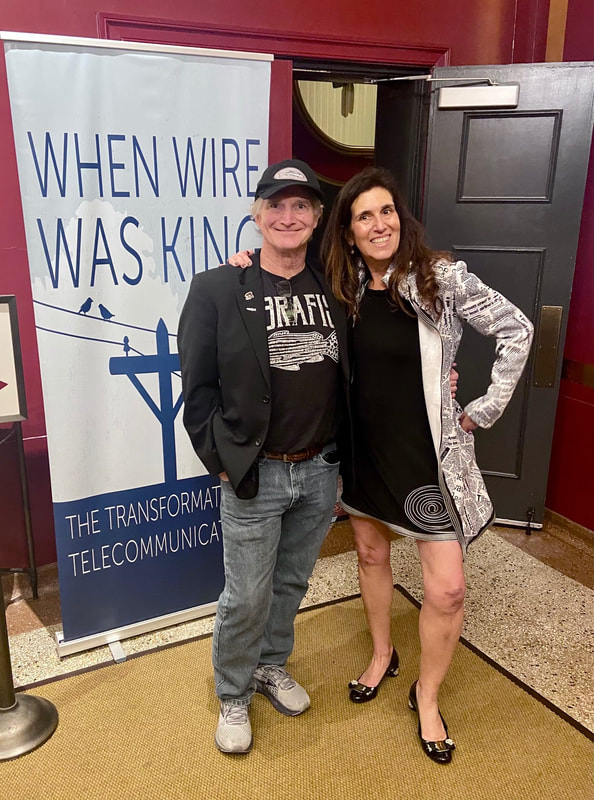With our film out now for just over 2 weeks, I am thrilled to share our success to date! We have been selected for 5 film festivals (including the Sunny Side Film Festival and the WPRN Women's Film Festival, as well as a Finalist in the Oniros Film Festival) for our feature-length film and won the following awards: Best Research and Investigative Documentary by the Angeles Documentaries and the Capital Award for Excellence by the Washington DC International Film Festival. We are over the moon excited!
0 Comments
This week we had our world premiere of When Wire Was King at the Avalon Theater in Washington, D.C. What a great event as we had over 300 people join us for our showing! The film was enthusiastically welcomed and we cannot wait to share our film further with all you!!!
Following my discussions with Gary, I decided I would write an oral history to capture the history of how competition in the US telecom market was created. I began by interviewing many of the people who were there. However, it became apparent to me that a two-dimensional book would lose so much of the story. This meant that I had to turn to film! However, despite having a college degree in theater, I had no experience in filmmaking. I then proceeded to talk to everyone I could to learn; but it soon became apparent that the only way to learn how to make a film was to do it! My husband and I had talked at length about highlighting the zebrafish, a research animal he worked on and loved, and so, I had my subject. And one day, I woke up, asked friends for the name of a production company, and spent the next year plus making my first film, a short documentary called, Zebrafish: Practically People (www.zebrafishfilm.org). The film was extremely well-received, and we even were finalists at the 2018 Cannes Film Festival. This put me on track to begin work on fulfilling my dream of capturing the story of how competition was created in the U.S. telecom market.
Just the other day I was asked why I chose to make, "When Wire Was King: The Transformation of Telecommunications". It is an interesting story. Since I started my career in telecommunications, I have always embraced a competitive telecom marketplace -- whether at the FCC or in the private sector. But the importance of competition really was drilled into me when I worked at MCI when I worked around the globe to open up monopoly telecom markets to competition. However, it did not hit me how important it was to preserve the history of our own story here in the United States till I was at a friend's wedding, where I sat next to Gary Parsons. For those of you who don't know Gary, he is the founder of XM Radio, but also the mastermind among other innovative companies, but most importantly here, was at MCI during the opening of local telephone services to competition. He told me stories that I had never heard before and it hit me -- his story and the stories of others who led the way to telecom competition in the United States must be told. (This is just the first part of the story. Log back in to read future posts on how our film was born).
As we get closer to the February 16th World Premiere of @whenwirewasking, I have been thinking of everyone who worked to make this film so special. Of course, I have to start with our crew including most notably my co-producer, Cliff Hackel who also served as our amazing story editor and my other co-producer, LeeAnn Dance, who also did double duty as our primary writer and archivist. Without Cliff and LeeAnn's dedication, expertise and professionalism, we would not have the film we have today.
There are many others I want to thank, but will leave this here today and follow up in future posts. We can't wait for you to see our film! We think you will like it and maybe learn a little too! As we near this year's New Year, I like to reflect on mid night, January 1, 1984 -- when AT&T's settlement decree with the U.S. government went into effect and AT&T was broken into 8 individual companies and the era of a competitive long-distance market began, with local to follow in another decade, across the United States. As our film tells, this break-up led to lower prices and more choices for consumers in the years since. However, it is important to note that nearly 40 years later, AT&T is once again the world's largest telecommunications company and almost all its former parts are back together again under the AT&T banner. However, AT&T does compete today with other telecom service providers including Verizon, who acquired MCI, a major early competitor to AT&T. At this time of the year, it is important to remember the lessons of the period leading up to January 1, 1984 as we look towards ways to ensure vibrant competition in the U.S. telecom market.
I am thrilled to report that we just finished our color and sound editing! We are in the final phase of production and plan to premier our film in the first quarter of 2023! We cannot wait to share with you our story on how competition came to the telecommunications marketplace. This evolution (or, more appropriately, revolution), has changed how we communicate. The lessons from this history are critical to understand the continued development of the telecommunications marketplace into the decade decade and beyond!
I am pleased to let you know that after several years of hard work, including filming a documentary during a pandemic, we are close to release! Thanks to the work of the When Wire Was King team, we are in the final phase of completing our sound and color editing. After this phase, we will finalize our trailer.
We are currently working on our distribution strategy to ensure that this story of how we arrived at a world of such choices for telecommunications services. I am anxious to get out to the widest audience possible the compelling story of how policy and technology intersected to create a world far removed from that of our parents and grandparents where being tethered to the house and office were our only choices to connect with one another. I will keep you up to date on our progress. I cannot wait to share this story with you as soon as possible. |
The Film |
Filmmaker & ExpertsSupportersContact |
Follow Us for Updates |
|
© 2023 When Wire Was King.


